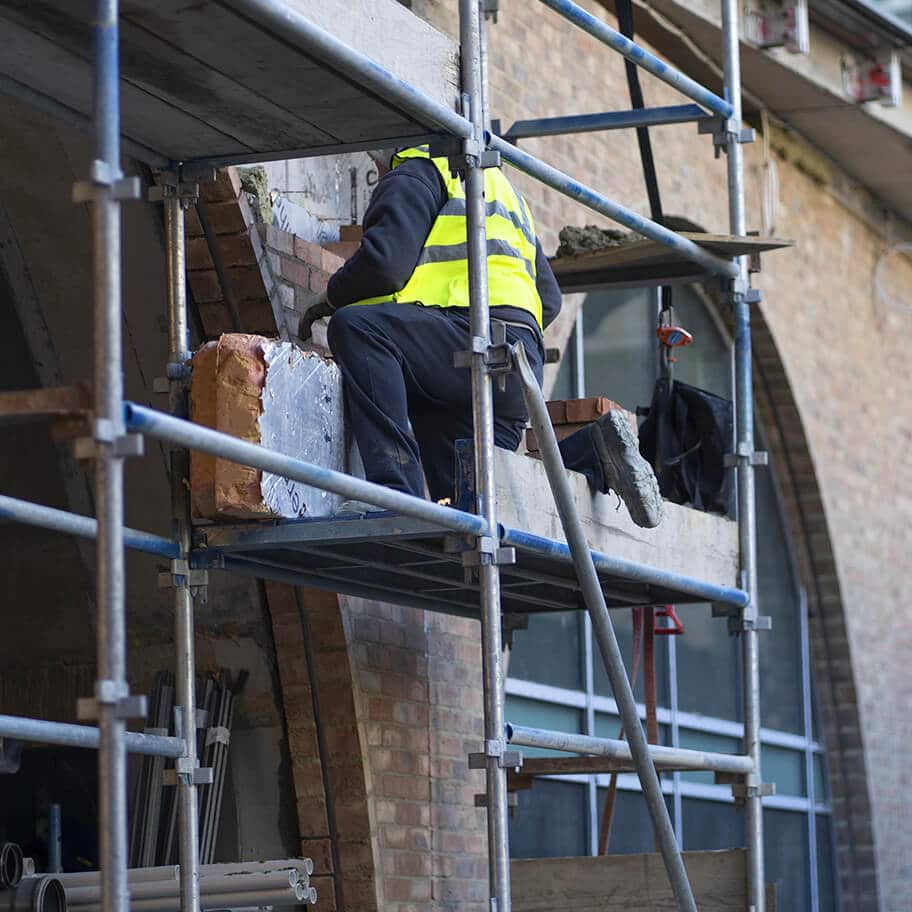A Common Workplace Accident
Scaffolding accidents are a common workplace accident, that can cause injury to construction workers, site visitors and pedestrians who are passing by. Working on a construction site comes with its own set of hazards, particularly where scaffolding is in use. The materials used to construct scaffolding combined with exposure to the elements means that health and safety procedures are vital in this area to ensure that the risk of injury is minimised.
Who is Liable?
If you have been involved in an accident there is an onus on you and your solicitor to prove that the person responsible for the accident acted negligently and it was another person’s actions or negligence that led to the accident and injuries.
The parties that may be responsible:
- The construction company in charge of the building site may have failed to meet health and safety standards
- An employee, if they did not follow the correct procedures while working on the site and acted in an irresponsible manner
- The suppliers of the scaffolding could be at fault if they provided inadequate and unsafe materials to the construction company
If scaffolding is incorrectly assembled it can collapse or move which may lead to accidents and serious injuries. Another common accident is materials falling from the scaffolding which could injure people below. It is up to everybody involved in the construction of the scaffolding to ensure that it has been assembled correctly and is safe to use.
Types of Scaffolding
There are many different types of scaffolding, all of which are prone to accidents if not contracted or used in the appropriate manner.
Some of these types include:
- Trestle Scaffolding
- Steel Scaffolding
- Patented Scaffolding
- Suspended Scaffolding
- Cantilever Scaffolding
- Single Scaffolding
- Double Scaffolding
- Kwikstage Scaffolding
Types of Injuries
There are various injuries that are caused by these accidents. These injuries vary in severity and are different in each case. No matter how severe your injury is you should always seek medical attention as soon as possible. Working at such a height can lead to fatalities if the materials and equipment are incorrectly assembled so it is crucial to follow the correct procedures at the assembly stage.
Common injuries include:
Causes
Employers must provide a safe working environment for their workers, while there are times that the employer’s negligence may be the reason for the accident, the workers themselves may be at fault in certain circumstances:
Construction by Incompetent Employees
Scaffolding should only be planned and erected by experienced and competent workers to ensure that adequate stability and sturdiness of the structure. Scaffolding that is not routinely or properly inspected before first use can lead to accidents.
Loading/Unloading of Materials On/Off the Structure
The scaffolding must be built in a way that materials and tools can be easily and safely loaded/unloaded/moved around the structure. At times where a worker struggles with the movement of materials on the structure, this may lead to an accident.
Entrance to the Scaffolding is Unsafe
Access points to the scaffolding that are unsafe, obstructed or unsupervised may lead to an accident. Where a scaffolding is not easily accessible entering and exiting the structure may be a cause of accidents.
Uninspected Structures
In cases where events, such as extreme weather, have occurred and the scaffolding has not been properly inspected by a trained person, the integrity of the structure may be compromised.
Falls From Heights
Workers who fall from heights can experience serious injury. Causes of this could be slippery conditions on the scaffolding, items left in walkways obstructing a worker’s path, poorly trained/untrained workers that were given permission to enter the scaffolding causing an accident.
Slips on Wet Surfaces
This could be a result of weather conditions or employee negligence. In cases where a person has spilt liquid and failed to clean it up, it could create slippery conditions leading to a slip and fall from the scaffolding.
Tripping Over Objects Left in the Way
It is imperative that walkways be left clear from obstruction. Objects left lying around may not be seen by other workers and cause a trip and fall accident.
Falling Objects
Falling objects can happen for a number of reasons, a common one being employee negligence where another worker lets something fall from a height injuring a person below them. Injury, in this case, may be sustained by fellow workers or pedestrians passing by below.
Collapsing Scaffolding
If the scaffolding is not planned and constructed by an experienced and trained group of people, the integrity of the structure may be compromised and collapse at any moment. The same can be said for inspections, repairs and maintenance, if not completed by trained professionals it can expose workers to risk of injury.
Lack of Personal Protective Equipment (PPE)
PPE must be provided to all workers to ensure their safety. In cases where a person is not provided with protective work gear, this may leave them exposed to a risk of injury.
Corroded and/or Rusting Components
Older parts that are rusting and/or corroded that are still in use can lead to collapse and serious injury for those involved. Thorough inspection routines must be put in place to ensure that any components of the scaffolding that may be corroded or rusting are identified and safely removed.
Dismantling of Scaffolding
Dismantling of scaffolding by untrained workers or scaffolding that is dismantled in an incorrect manner may lead to accidents.
Preventing Scaffolding Accidents
The Health and Safety Authority of Ireland (HSA) issued a safety alert with regards to scaffolding components and recommends:
- Regular and routine inspections of scaffolding components must be carried out to ensure the integrity of the structure is not compromised at any time.
- Excessively rusted or corroded components should never be used and if discovered on the structure should be safely removed and replaced.
- Manufacturers manual for all system scaffolds must be readily available and used when erecting, modifying and taking down scaffolding.
What to do after an accident at work*?
Following an accident at work, there are a number of steps you should follow:
-
Seek medical attention
Your health is your wealth and should be your first priority. Immediately after an accident at work, take a second to assess yourself to determine if you have any injuries and seek the relevant medical attention. If you have sustained a serious injury ensure that you contact an ambulance to attend the scene.
For minor injuries, you must remember that minor injuries where you ‘feel fine’ could progress to more serious injuries in the future. In this case it is always better to be safe than sorry and advisable that you go to your nearest accident and emergency (A&E) or local GP to be checked out.
-
Report the accident
It is critical to report the accident to your superior, i.e. a supervisor or manager on site. It doesn’t matter how small you think the accident may be. By law, accidents at work are required to be reported if the person is injured and can’t perform their daily work tasks for more than three days. Make sure to fill out an Accident Report Form. This can be used for reference in any medical examination and will also prevent any similar accidents from happening in the future.
-
Identify any witnesses
If possible, try to collect the contact details of anybody that witnessed your accident. This may be of use if you do decide to pursue a workplace accident claim. It is also useful to find out if there is any CCTV in the area where your accident happened.
-
Document the incident
It is important that you collect all the relevant information in connection with your accident:
- How the accident happened
- Details of any witnesses
- If there are any CCTV recordings of your accident
- Take pictures of where the accident happened and what caused your accident
-
Speak to a workplace accident solicitor
If you are considering moving forward with a workplace accident claim for any personal injuries sustained, it is advisable that you speak with a workplace accident claims solicitor as soon as possible. If you are proceeding with a claim, the first step will be submitting your claim to the Personal Injuries Assessment Board (PIAB) for assessment. A workplace accident solicitor can help you in preparing your application to the Personal Injuries Assessment Board (PIAB) and ensure that you follow the process in the correct format, meaning that you can move forward with your claim quickly without unnecessary delays.
It is important to remember to keep copies of any expenses that you have incurred as a result of the accident. It is also imperative to retain copies of medical reports or incident report forms where possible as you will need them when making a claim.

